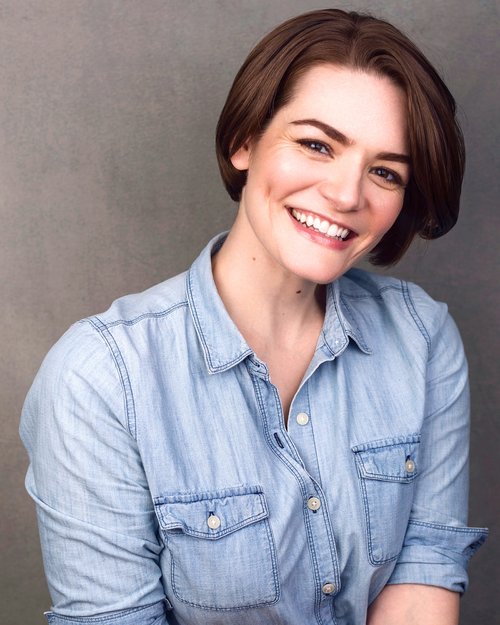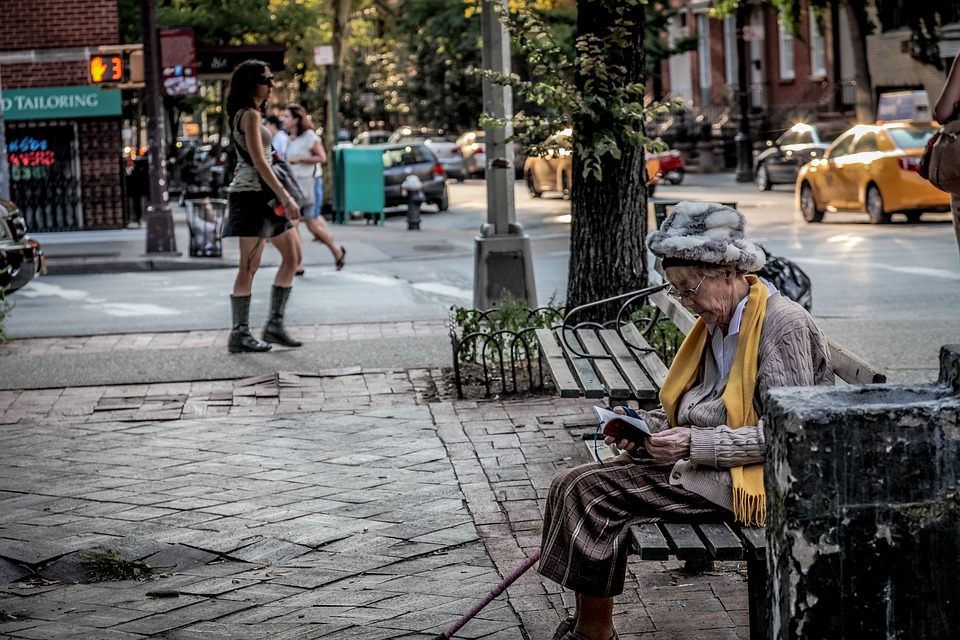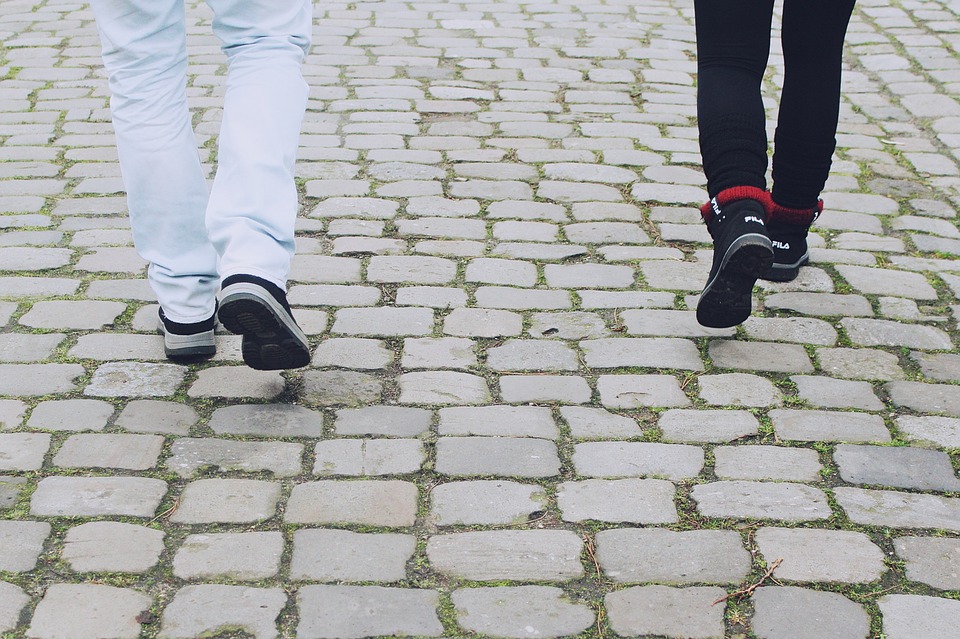
How You Move Matters
Free Alexander Technique Exercises, Tips, and Resources
Getting Unstuck!
Recently Caitlyn, an accomplished actor, came in for one of her private AT sessions. We’d been focusing on her monologue work and she brought up a particular pattern she’s been working through, and a particular goal, which she termed “not performing my insecurities.” This is a common theme in the work that I do with my clients, and inspired by Caitlyn I’ve been exploring this question in my classes as of late. What does it mean to “not perform one’s insecurities” in practice? And how can we avoid rehearsing our insecurities or tendencies?
Way back when F. M. Alexander started his self-observations, he was grappling with a strong tendency to interfere with his breath and voice when acting. Based on his own description, he was caught in a pattern that today we might call “getting stuck in one’s head”. Perfectionism and similar tendencies can lead us to defensive, self-protective behavior. When we use defensive actions, like freezing up or pushing through, we are rehearsing our insecurities.
Finding your way toward creative freedom and resiliency is one of the journeys of acting that we strengthen via the Alexander Technique. We open our acting choices, explore working with them, and curiosity + discovery is returned to the actor’s experience; the pleasure and passion felt for acting is refreshed.
What is a pattern you feel stuck in as an actor?
How often does what you understand about your tendencies align with the feedback you are getting in class or in rehearsal?
I’d like to hear from you about what skills you practice for freeing yourself from defensive patterns, where you feel successful, and where you’d like my help.
In my upcoming Tuesday special topics classes, we will be hearing from each actor and addressing the interference of their patterns in specific aspects of acting and auditioning. Those who are new to the Alexander work can continue with the basics (level 2) on Thursday evenings. On Fridays at noon, we will take time to check in on ourselves through movement and breathing.
I look forward to seeing you in the studio!
Words: Choosing My Emphasis (Plus Free AT Exercise)
How do we choose our words?
I’m a bit awed by the power of words and frustrated by the abuse of this power in forums like twitter. I have to admit some fatigue at how difficult it is to dodge the effect of words, so that sometimes I try to rush past them or tune them out! They touch off very deeply felt beliefs, evoke past experiences and plant the seeds of our impulses.
We’ve been grappling with the impulses born from words in the studio lab this past month. We’ve explored ways of being through embodying the catalyst of a word: communicating through gesture, breath and action. We found ways of expressing monologues non-verbally, without sound. This month we are speaking the words, connecting thought, gesture and sound.
Spoken words resonate. The sounds waves resonate through our bones, while the associated meaning changes our way of being. Words offer choices in how we handle them and examine them. How we place emphasis is a choice that shifts the impact of a word. Just by slowing down a bit, we can notice the effect of our choices of emphasis on meaning.
I like to play with meaning and emphasis while I’m walking down the street.
Try this:
An Experiment- "Words and walking”:
Try this experiment about emphasis and embodied meaning the next time you are walking…
Start with this simple, true statement: I AM WALKING ALONG THIS STREET.
Divide it into 3 possible emphases: I, WALKING, STREET (who, what, where)
Play with emphasis.
1) Let’s start with the emphasis on “street."
I am walking down this street - this particular street. What is around me on this street? What is in my immediate field of attention? Am I passing under a sidewalk shed, past construction? Are there trees? Trash? Other people? What kinds of buildings are along this street? Are there cars passing by quickly or is the traffic dense and slow? Looking up, I can see the sky and feel the quality of the air, the humidity, the temperature variations, is there a breeze on this street? This street, right now!
2) Now emphasize “walking."
What am I doing? Oh, I’m walking! What’s going on with my walking? Am I earnestly attending to the efficiency of my walk? Or am I mostly oblivious to the sensations of walking? Do I dare try out a funny walk in public? What are some of the specifics of walking? How are my legs swinging? How do my feet contact the ground? Can I sense my rhythm? What are some of the AT cues I’ve been using for walking - like letting my knees release forward, easily, from the back of my knee? Can I release extra weight or tension as I walk? What about Alexander’s simple self-directions: let my neck be free so that the weight of my head releases up and out of my spine, let my back spring up tall and wide and deep, let my arms swing easily at my sides, let my legs release away from my head and use the ground.
Walking!
3) Now play with the emphasis on “I."
Here I am! I. Me. I’m the one walking, with ease if I choose it. I’m the one deciding where to go next, I walk along this street and so I am essential to this place and this moment. Every step I take is happening NOW and now and now. Here I am and you can see me! I’m here, aware of my surroundings and with inner sensation… I’m walking with my own private history and beliefs. I am.
And finally, equally emphasize all three elements: I AM WALKING ALONG THIS STREET.
Each choice of emphasis is more than a choice of words: it’s a choice of perspective. The experience of each word evokes a different way of being within the same activity.
How To Avoid Being Triggered By Your Family During the Holidays
How to avoid being triggered by your family during the holidays
The holidays are the perfect time to reconnect with your family—which, for many of us, brings up mixed emotions. We love our families and we want to see them and spend time with them. But for many of us, family members also have a unique ability to drive us crazy, causing us to fall back into old patterns and making us feel like we never left.
This holiday season, if you start to get triggered by your family’s annoying habits—or you find yourself reverting back to your childhood role in a maelstrom of dysfunctional family dynamics—remind yourself of one thing. All those reactions, whether they're justified or not, are reactions. They're just patterned responses to some stimulus—and those reactions usually happen entirely on automatic pilot.
When a certain someone makes a passive-aggressive comment about your weight or a pointed joke about the fact that you’re still single, wouldn’t it be nice to find a way to create a gap between what they say and your reaction to it? To create a little cushion of time for yourself so you can be less reactive to triggers?
A good place to start is by activating your postural balance so that your movement coordination reflects a calmer, more creative use of your central nervous system.
Start taking care of our nervous system by taking care of your head. Your head is subject to the actions of your neck. Freeing up your neck is the key to taking care of your head, and therefore yourself.
You don’t need to be an anatomy expert to know something about your neck muscles because they get super tight when we're tense. The neck has layers of muscles, some close to the spine, others creating the graceful shape of your neck. These muscles move your head and manage your balance.
Take a moment to get more in touch with your neck. Start by nodding your head for a moment and feel the muscles around your throat and the back of your neck. Turn your head side to side, looking right and left. You'll feel muscles move but also stretch. Tilt your head like you're listening to your shoulder, first on one side and then the other. You'll feel a lot of stretching and contracting going on.
So, now that you’ve found those muscles that move your head and directed your awareness to them, what if you soften those muscles instead of tightening them so you aren't pulling your head at all?
When you soften those muscles, your head is much freer, and the spring-like action of your spine can release. Without pressure from tight neck muscles, the weighty head can actually rebound upward, allowing your stature to expand. Back muscles and spinal discs that were compressed can follow along in spring-like release. Breathing becomes less compromised by musculoskeletal pressure.
This anti-triggering movement frees your brain up and out instead of pulling your brain down and into your body and mindless reactivity. So give it a try next time the holiday cookie tray gets passed around. Freeing up your neck/head/back relationship will give you a cushion of time for being less triggered.
What can you do in the cushion of time you’ve just found? Take a minute to appreciate being unhooked and take your attention off yourself. Observe your family members neck and heads in action. Notice how they're moving (or not moving) and what's happening with their balance. Are they scrunching down on themselves? Are they moving easily with lots of flow?
Chances are that you've been unconsciously mirroring the tension of the people around you. If they're holding an opinionated position in a conversation, they're probably also holding a rigid physical position. If you can un-position and be more flexible, you’ll have a great advantage. You won’t be stuck.
So how does ease and freedom in your neck help you be less reactive emotionally? Flexible neck/head/back coordination goes along with resiliency. Whereas tension makes us more self-conscious, release of tension enhances our awareness of what's going on moment-to-moment around us. Like other vertebrate animals, we’re more rigid when we’re on alert and more plastic when we’re at ease.
When you "unset" your neck, you're moving out of your old patterns. You're opening up the possibility that you don't have to react to your usual triggers. You're opening "up and out" to new experiences with your family. And they’ll be experiencing you as your most resilient, calm, and joyful self.
Happy Holidays!
Belinda Mello










